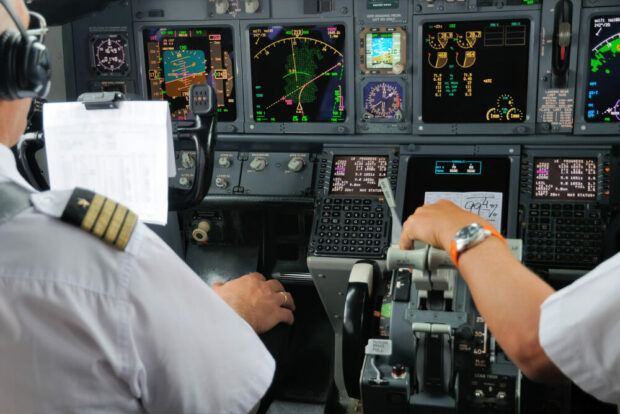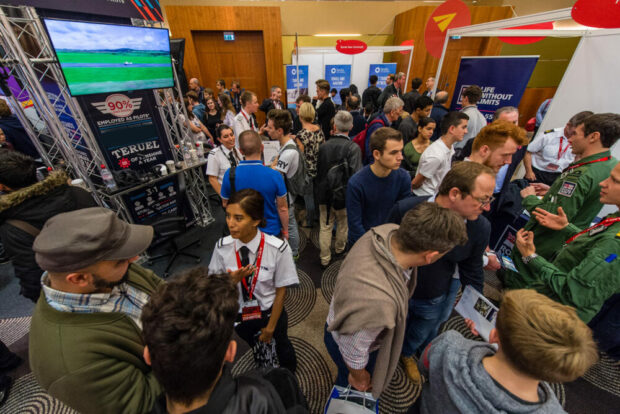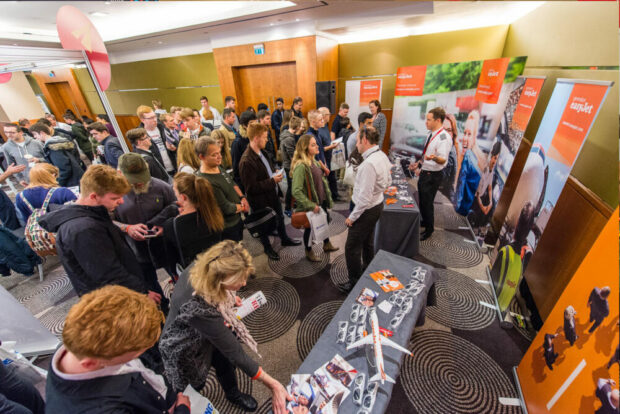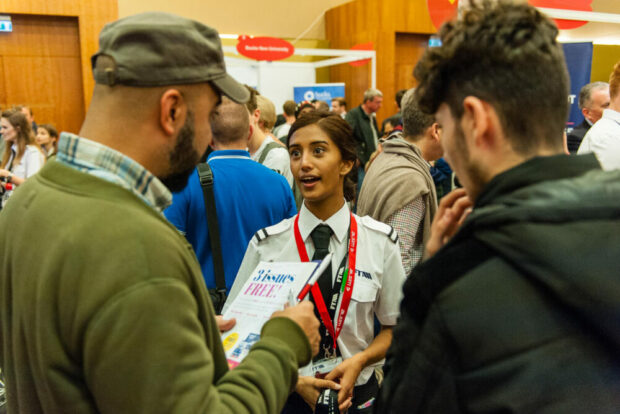Words Yayeri van Baarsen and Jonny Salmon
So you’re dreaming of becoming an airline pilot? Great career choice! Here we consider the path to an airliner cockpit and the costs involved.
Flying airliners around the world is a professional career that takes hard work, dedication, and self-sacrifice to achieve. Getting to the flight deck also requires a huge financial investment. We have delved into the professional flying world, distilling crucial information to answer what seems like a simple question: How much does an airline transport pilot licence (ATPL) actually cost?
The short answer, as you might expect, is it varies. The biggest factor in determining the total cost will be whether you choose integrated or modular training. Overall, integrated training is the bigger financial commitment, costing between £100,000 and £125,000. Modular training can be done for a lot less – expect to pay between £75,000 and £90,000. It does, however, usually take more time.
Integrated vs Modular
Integrated training: The all-inclusive way where you pay a significant sum of money to a training provider. Save for a few small extras, that’s it, you’ll be continuously trained to the point of gaining your frozen ATPL (fATPL). Integrated training is done full-time and at a single organisation. It usually takes 18 to 24 months, includes more hours in flight simulators, and follows a rigid structure, starting with classroom-based ATPL theory. Some training providers have links with airlines which could help your career prospects.
Modular training: You train step-by-step, achieving each part of the ATPL jigsaw separately, starting with a PPL course. This spreads costs (‘pay as you fly’) and usually adds time. Modular training can be built around other commitments such as a job, study or family, but some students find it harder to stay motivated. If cashflow isn’t an issue, it is possible to take the modules without a break in between.
Which to choose? Both routes have the same (medical) requirements and will take you from having zero flying experience all the way to being a pre type rating airline pilot. Which is the best option for you completely depends on your personal circumstances and preferences. Do you want your ATPL as soon as possible, can you take the time off to fully devote to flight training, and are you able to pay the entire sum upfront (see our paragraph entitled ‘Buyer Beware’, then integrated training may be the way to go. However, if you prefer to train at your own pace in bitesize chunks, spread the costs and have other work or family commitments alongside flight training, the modular route might be a better fit for you.

Making it to the cockpit of an airliner isn’t a stroll in the park. It’s hard work and takes commitment
So, what’s needed for an ATPL?
The way to the cockpit of an airliner isn’t an easy one. Getting an ATPL requires a number of things, some of which need to be done in a particular order, whereas with others it’s up to you. It’s easy to become overwhelmed at first by the terminology used in the aviation industry, so take the time to learn about the steps that lead to an ATPL.
Medical
First things first: to train for an ATPL, you’ll need to hold a Class 1 UK Medical Certificate (the highest standard). Make sure you’re medically fit to fly before signing up to any training course. Budget up to £750 for an initial Class 1 Medical and around £200 for renewals each year.
Private Pilot Licence (PPL)
If you study modular, your first flying training requirement will be a private pilot licence (PPL), where you’ll learn the basics of flying an aircraft, including your first solo flight.
If you manage to achieve your PPL in the minimum time of 45 hours, it’ll set you back somewhere in the region of £10,000. However, most students take longer, with the UK national average being between 55 and 60 hours. In other words: budgeting £15,000 for a PPL is more realistic.
Link: How much for a Private Pilot’s Licence?
ATPL theory
The ATPL theory exams cover 13 subjects in huge detail. In other words: there’s a lot to learn, which will take you at least 650 hours of studying. Either study by yourself, via an online distance learning course for £2,000 to £3,000, or pay upwards of £4,000-£6,000 and go with a faster classroom delivered course. Whichever method you choose, you’ll have to achieve passes (75%) in the following subjects:
- Air Law
- Communications (VFR and IFR)
- Principles of Flight
- Aircraft General Knowledge
- Instrumentation
- Meteorology
- General Navigation
- Human Performance and Limitations
- Operational Procedures
- Mass and Balance
- Performance
- Radio Navigation
- Flight Planning and monitoring
An integrated course will usually start with six months in the classroom followed by the exams before any flying. Modular students using distance learning will tend to take between 12 and 18 months depending on the study time available, but as a guide you should plan for about 15 hours a week.
If you choose to follow the modular route you’ll need an ICAO PPL before starting theoretical knowledge.
Hour building
After obtaining your PPL, you’ll have to spend some time hour building before you’re allowed to go for your CPL. The commercial licence requirements include a minimum of 150 hours flying time.
The price of this hour building hugely depends on the type of aircraft you choose, but budget between £150 and £200 per hour. Some aviation schools offer hour building packages which are a better deal than paying for separate flying hours. While hour building, you’ll probably want to get your Night Rating, which takes at least five hours.
Commercial Pilot Licence (CPL)
The next step up from a PPL, a CPL will teach you to fly professionally with passengers and to a higher degree of piloting skill. This 25-hour course can cost anywhere from £5,000 to £15,000, depending on the aircraft type you use and whether you already hold an Instrument Rating. As mentioned above, you’ll need to have achieved your PPL, valid theoretical knowledge examinations and have 150 hours under your belt before you can start CPL training.
Multi-Engine Piston (MEP) rating
At some point you’ll need to learn and qualify to fly multi-engine aircraft. This process can be combined with a CPL, Instrument Rating, or conducted separately. A standalone MEP rating could cost anywhere from £4,000 to £8,000, depending on the ATO, aircraft type and other factors.
Instrument Rating (IR)
The IR is another big chunk of work (and money). It allows you to fly under instrument flight rules (IFR), meaning solely with reference to the in-cockpit instrumentation. In other words: with an IR, you can fly in cloud, heavy rain, and other adverse weather conditions.
Most people combine the IR with a multi-engine rating (known as the MEIR, Multi-Engine Instrument Rating), in one training course. Expect to pay between £17,000 and £20,000 for an MEIR.
Upset Prevention and Recovery Training (UPRT)
UPRT is all about preventing an aircraft from entering any kind of unusual attitude and, therefore, also recovering an aircraft if it does end up pointing the wrong way or in an unexpected situation. Advanced UPRT is a standalone course that is now mandatory. The course usually includes five hours of theoretical learning and three hours of flying. Expect to pay between £1,300 and £2,000 for an AUPRT.
Airline Pilot Standard Multi Crew Cooperation (APS MCC)
MCC is a mandated course designed to prepare you for operating commercial jet aircraft, since the bulk of your flying experience until now has been on single and multi-engine piston aircraft. It teaches you about the multi-crew environment, airliner flight instrumentation systems, decision making, etc. Many employers will want to see the slightly more demanding APS MCC. Expect to pay in the region of £4,000 to £6,000 for an APS MCC course, which is required to apply for multi-crew airline jobs.

Pilot Careers Live are a must visit when it comes to choosing your flying future
Which licence should you go for?
Frozen ATPL (fATPL)
When you first qualify, having passed all the training courses and theory exams, you’ll get a so-called frozen ATPL (fATPL). This allows you to apply for jobs as a first officer or co-pilot. Once you’ve reached 1,500 flying hours, you can apply for a full ATPL, which makes it possible to apply for jobs as a captain.
CAA, EASA, or dual ATPL?
What type of ATPL you’ll need depends on the airline you’ll end up flying for. Simply put: if the airline is based or registered in the UK, you’ll need a CAA ATPL, whereas if the airline is based or registered in an EU member state, you’ll need an EASA ATPL.
Not sure yet where you’ll end up working? Then it might be handy to get a dual ATPL, which is offered by some ATOs. This allows you to work for CAA and EASA registered airlines. It also means you’ll need two medicals and will have to do both sets of theoretical exams and flying skills tests in different airspaces – no need to worry, training is the same. Of course, a dual licence costs more money; count on an extra £5,000 or so. It’s also possible to do some extra training and convert your licence afterwards.

You can find out from industry experts just exactly what will best suit you when you visit the numerous Pilot Careers Live shows in the UK and Europe
Integrated training
Larger approved training organisations (ATOs) conduct integrated training courses which provide everything you need in one package. Before signing up, do check exactly what’s included and what’s not. Costs of things like accommodation, renewal of your medical and learning materials all add up if they’re not included in the course. Some ATOs offer the opportunity to pay in instalments, spreading costs over the period of your training.
Here’s what some of the UK’s leading ATOs are charging for their ATPL courses (prices correct February 2024).
Leading Edge Aviation
Oxford-based Leading Edge Aviation offer single UK CAA licence and dual CAA/EASA licence courses. The total fees for each are £104,500 and £109,500 respectively. Training is done both at their Oxford campus and at their Alhama campus in Murcia (Spain) and includes accommodation.
Aeros Flight Training
With dual approved CAA/EASA academies in Cardiff, Coventry, Gloucester, Leeds East and Wellesbourne Aeros offer ‘Fastrack’ a hybrid structured modular ATPL single course for the issue of both CAA and EASA licences. This allows you to schedule your training around other commitments and pay as you learn, Fastrack can also be delivered on a full-time basis in 18 months. The cost for all modules is £88,495 or £93,495 respectively.
FTEJerez
Based in southern Spain, FTEJerez, which currently partners with several airlines for cadet schemes, charge €124,000 for its 62-week EASA ATPL training course, which features full accommodation and board. Also want a CAA licence? That’s an additional fee of £4,600 (accommodation in the UK not included).
CAE
CAE, based at sites around the world, including Oxford and London Gatwick, offer its integrated ATPL for £99,900. This doesn’t include board or accommodation.
L3Harris Airline Academy
At L3Harris you’ll train in the UK (London and Cranfield), as well as in the USA (Florida). Its integrated ATPL course costs £102,500 and includes accommodation during the basic flight training in the USA. Want a dual CAA/EASA licence? That’s £109,300.
Skyborne Airline Academy
Another ATO linked to airlines is Gloucestershire-based Skyborne. Its £105,500 integrated course is delivered between Gloucestershire and Florida over 67 weeks, with the option to add a University of West London degree for an additional £6,000.
Save money with sponsorships
Sometimes, ATPL training can cost less, and, for a lucky few, it costs nothing at all. Various organisations including the Air League, the Honourable Company of Air Pilots and the British Women Pilots’ Association (BWPA) offer bursaries and scholarships. These can include a few hours of flight training or the cost of your ATPL exams, through to the cost of an entire PPL.
Some airlines are now also (some will say ‘finally’), paying for pilot training. British Airways, TUI and Aer Lingus are three examples of airlines that currently offer funded cadet programmes. These cadetships are hugely popular, with 24,000 people applying for British Airways’ 2023 Speedbird Academy, which resulted in 100 successful applicants.
• British Airways confirms 2024 Speedbird Academy
Applications for 2024 are now closed, but make sure to keep checking for opportunities in 2025. After being accepted, all training will be sponsored by the airline. There’s a bond, meaning you’ll be expected to work for the airline for a certain period.

You will have access to dozens of ATOs all under one roof at Pilot Careers Live events – and real, live cadets and pilots to talk to
Do your research – visit Pilot Careers Live
So, you’re got your ATPL options, what next? Take the time to do your research. Find out if you want a single or dual ATPL, and which route (modular or integrated) and training provider best suit your needs. A great way of doing this in a single day is by visiting a Pilot Careers Live event.
These events are run throughout Europe from March to November 2024 and give you access to dozens of ATOs under one roof. It’s the opportunity to meet the representatives of the flight schools face to face, talk to past students, ask all your questions, and find out everything about training options, fees, and requirements. Get your tickets for Europe’s biggest commercial flight training event here.
Buyer beware
The costs involved in flight training are huge, both for the student and for the organisation they chose to train with. In 2023 three major UK ATOs closed, two of which left students out of pocket. Risk lies on both sides and it is, therefore, important to do your due diligence and satisfy yourself that your investment is going to be safe.
How can you do this? One simple way is to find an ATO that allows you to either pay as you go, or pay in smaller instalments. This reduces your own exposure. If you are paying upfront, ask how the money is held and always ask advice from parents or guardians if you’re unsure about anything.
Hard truth: It’s never been easier to do your due diligence, but we talk to lots of people every year who seem happy to leave everything to luck. Don’t be that person.

